 |
Bhutan Health |
 |
Bhutan Information |
|
|
 |
| 2005:
More efforts needed to contain malaria |
 |
Although
control measures have helped in bringing down malaria related illnesses
and deaths in the southern belt, the disease is still a threat, according
to the latest reports from the Vector-borne Disease Control Programme
(VDCP) in Gelephu, Sarpang.
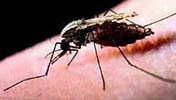 |
| 1994 |
1998 |
1999 |
2001 |
2004 |
| 38,901 |
3,403 |
6,380 |
2,670 |
5,982 |
| A
total of 2,670 cases of malaria with five deaths were reported in 2004 against 5,982 reported cases and 14 deaths in 2001. |
|
"There
has been a considerable improvement but challenges still exist," said the
VDCP programme manager, Dr. Karma Lhazeen. For the first time, Samtse dzongkhag
reported the highest number of malaria cases contributing 38 percent of
the total in 2004.
"This is the first time in the history of malaria in Bhutan," said Dr.
Karma Lhazeen.
| Decrease
of malaria cases |
Dr.
Lhazeen said that in 1994,
when there were 38,901 reported malaria cases in the country, the
highest ever recorded, Samtse contributed only about seven percent. "This
is a startling increase in few years," she said, adding that there were
some factors that may be the probable causes.
The
resettlement of people from less malaria prone areas to the endemic areas
and increase in the movement of these people into the high malaria transmission
localities were cited as some major causes contributing to the increase
in malaria cases. "Besides, routine surveillance and supervisory activities
in this dzongkhag are hampered because of inadequate fund," said Dr. Lhazeen.
| Meanwhile,
the two most malaria plagued sub-tropical dzongkhags of Sarpang and Samdrup Jongkhar have shown considerable improvement. In Sarpang,
the cases have been reduced from 51 percent in 2001 to 34 percent last year. Samdrup Jongkhar also showed a decrease
from 46 percent in 1998 to only 14 percent in 2004.
Intensified
awareness campaigns and strengthened surveillance activities were cited
as the reasons for the improvement. "Since the early years these dzongkhags
have been given priority as they are the most prone areas to malaria infection,"
said Dr. Lhazeen. |
|
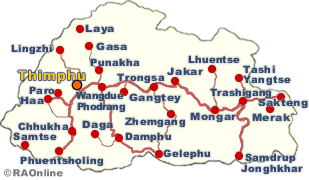 |
Meanwhile,
the latest figures show that the beginning of 2005 saw 67 cases of malaria which, according to Dr. Lhazeen, is better
than last year's number of 94 for the same period.
Of
the various initiatives, Insecticide Treated Bed Nets (ITBN) were
"impregnated" with the insecticide twice a year. In areas with high Plasmodium
falciparum malaria, Focal Indoor Residual Spray (IRS) was done
once a year in high transmission areas and forest and other adjoining areas
just before the maximum transmission season.
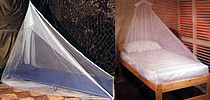 |
| New
strategies have also been recently introduced to curb the problem. The long
lasting insecticide nets (LLINs) which are pre-treated bed nets that
need not be treated with insecticides like ordinary bed-nets have been
lately introduced along with a new drug called co-artem for treatment
of uncomplicated falciparum malaria. "This drug is very effective
and will prevent spread of drug resistant malaria," said Dr. Lhazeen. |
|
| Malaria
caused by mosquito bites |
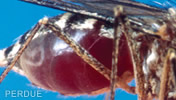 |
| Malaria,
most often, is caused by the bite of a female Anopheles species mosquito that is infected with one of the four different species of the protozoan
genus Plasmodium, the parasitic protozoa that cause malaria. Plasmodium
vivax and Plasmodium falciparum were the two most common infections
found in Bhutan. |
|
Malaria
can also be transmitted via a blood transfusion or congenitally between
mother and fetus, although these forms of infection were rare, the health
officials said.
The
health officials warn that Plasmodium falciparum is the most widespread
and dangerous and if left untreated it can lead to fatal cerebral malaria.
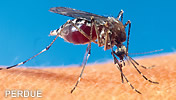 |
Fever,
cough, shaking chills, headache and pain in the joints are some early symptoms
of malaria. The patient usually remains "asymptomatic" for a week or more
after the infecting mosquito bite, said the health officials.
"Malaria
is a complex but a curable and preventable disease," said Dr. Lhazeen. |
|
"Lives can be saved if the disease is detected early. The longer a person
delays in seeking medical care, more the chances of developing complications
which may lead to death."
Health
officials also advise the people to keep the surrounding areas clean and
dry by clearing drains frequently, clearing bushes around the dwellings
before spraying operations so that mosquito-resting places are destroyed.
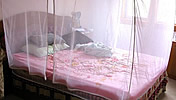 |
| About 177
health centers scattered across the country reported on malaria cases,
with 46 of these established in the endemic areas. Sibsoo hospital reported 438 numbers of malaria cases, followed by Lhamoizinkha in Sarpang and Samtse hospital at 289 and 223 cases respectively. |
|
About 177
health centers scattered across the country reported on malaria cases,
with 46 of these established in the endemic areas. Sibsoo hospital reported 438 numbers of malaria cases, followed by Lhamoizinkha in Sarpang and Samtse hospital at 289 and 223 cases respectively.
Despite
the efforts the challenge still remains, said Dr. Lhazeen. "We are targeting
to 50 percent reduction in malaria with no deaths in 2005,"
she said. "For this, we need strong support and commitment of the dzongkhag
administrations, community participation through consistent net use and
committed field workers to carry out routine surveillance were important."
Meanwhile, dengue
fever, Japanese encephalitis and filariasis were other diseases that
were posing risk to people in areas with a hot and humid climate as vectors
of these diseases were found abundant in all endemic areas and even in
non-malarious dzongkhags in Bhutan.
| This
article was contributed by Kinley Wangmo, KUENSEL, Bhutan's National
Newspaper |
 |
| Links |
 |
 |
 |
External
links |
|








